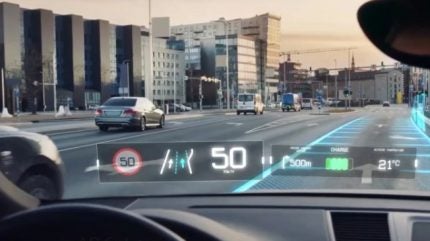
AR is used in various areas of the automotive sector. A notable application is head-up displays (HUDs) and headset infotainment systems, which use AR as part of augmented GPS navigation, warning systems, and to ease poor light conditions.
AR headsets are being used in maintenance and manufacturing to reduce training time and perform updates and quality control checks more efficiently and accurately.
The advancement of AR in the automotive sector will be key to the metaverse, as it is based on AR-related technology. The metaverse concept (a virtual world where users share experiences and interact in real-time within simulated scenarios) has gained and lost traction since the beginning of 2021.
AR-related technologies such as simultaneous localization and mapping (SLAM), facial recognition, and motion tracking will be vital for developing metaverse-based use cases.
Augmented Reality (AR) in Automotive – Thematic Intelligence
Some automotive companies have already begun exploring the metaverse. For example, BMW has partnered with NVIDIA, and Hyundai has partnered with Unity, both intending to build virtually accessible 3D digital twins of their factories. This will allow employees to collaboratively assess modifications and adjustments to production lines in the early planning stages.
How well do you really know your competitors?
Access the most comprehensive Company Profiles on the market, powered by GlobalData. Save hours of research. Gain competitive edge.

Thank you!
Your download email will arrive shortly
Not ready to buy yet? Download a free sample
We are confident about the unique quality of our Company Profiles. However, we want you to make the most beneficial decision for your business, so we offer a free sample that you can download by submitting the below form
By GlobalDataIn 2021, WayRay developed a concept car, the Holograktor, which it dubbed a “metaverse on wheels” due to its heavy reliance on AR technology.
In GlobalData’s Tech Sentiment Polls Q4 2023, 52% of respondents said AR was hyped, but they could see a use for it, with 21% responding that AR would live up to all its promises. However, the timeline for AR to be genuinely disruptive is unclear, with 25% of respondents saying AR would never disrupt their industry. 21% said that it would take five to 10 years for the disruptive potential of AR to be felt, and only 23% of respondents said AR was already disrupting their industry.
AR has broad uses for the automotive industry
Augmented reality (AR) is a technology that allows users to see the real world overlaid with digital data. AR can enable the safer operation of vehicles through easily understandable head-up displays (HUDs). Unlike semi-autonomous or fully self-driving vehicles, the ability to see the outside world clearly is a safety-critical issue in vehicles where a human is driving. AR can also ensure faster training of automotive staff, create more immersive entertainment experiences, and help with vehicle manufacturing.
AR will enhance user experience from in and out of the vehicle
Worth nearly $22 billion in 2022, the global AR market will reach $100 billion by 2030, according to GlobalData forecasts. AR can play a wide range of valuable roles in vehicles. By overlaying navigation instructions on real-world images, AR enables more precise guidance based on the actual road layout facing the driver. From a practical perspective, this means junction exits and final destinations can be visibly highlighted. From a safety perspective, potential hazards, including potholes, pedestrians, and other vehicles on the road, can be visibly emphasized. This is especially useful in night-time conditions or when severe weather patterns reduce visibility.
Autonomous vehicles will enable AR adoption
GlobalData forecasts the first fully self-driving vehicles will arrive before 2030. The arrival of autonomous vehicles (AVs) will allow content to be overlayed on the outside world or allow car windows to be repurposed to display a different world entirely.
AR can also increase maintenance, software, and hardware upgrade efficiency outside the vehicle, creating new avenues for sales. Technicians can have repair and maintenance instructions and training materials overlaid on their physical view of the car, directing them to the next task without needing to research it separately. AR can enhance consumer engagement and increase brand loyalty by allowing customers to view virtual vehicles in real life and take them for a virtual test drive.
Leaders and laggards
Below are some of the leading and lagging players in AR adoption in the automotive sector.
Original equipment manufacturers:
- Leaders: BMW, Hyundai, Mercedes-Benz, Renault, Volkswagen, Nio,
- Laggards: Mitsubishi Motors, Suzuki.
Suppliers:
- Leaders: Nvidia, Visteon, Qualcomm, Envisics, Intel, Panasonic, LG
- Laggards: BorgWarner, Aisin, Nippon Sheet Glass.
Specialist vendors and service providers
- Leaders: AGC, Wayray, Holoride, Blippar, Stradvision, Varjo, DigiLens.







